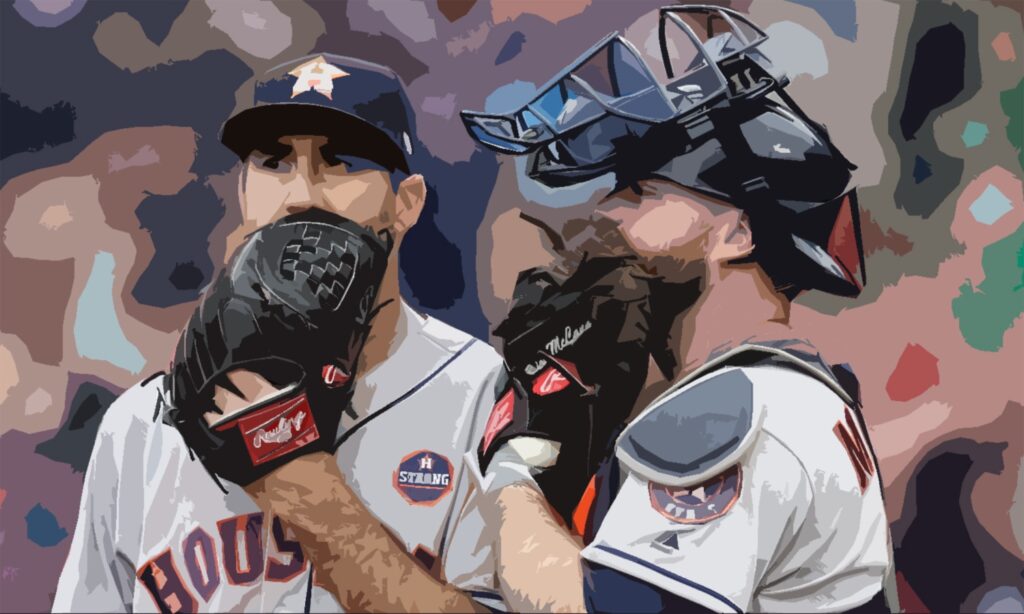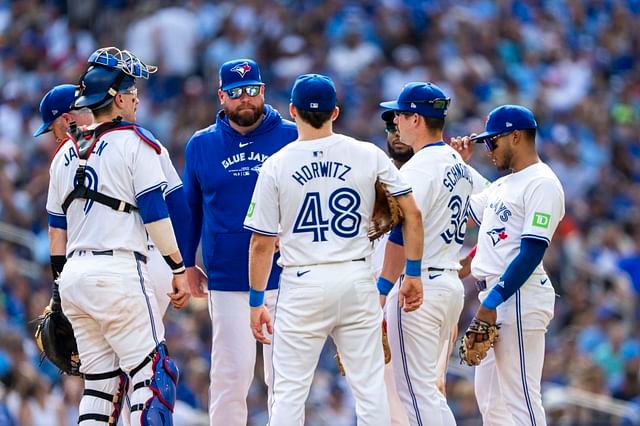MVR stands for “Mound Visits Remaining” in baseball. It is a rule that limits the number of visits a team can make to the pitcher’s mound during a game.
Baseball is a game full of strategies and tactics. One of the key strategies involves how often a coach or player visits the pitcher on the mound. The term “MVR” is crucial to understanding this aspect of the game. Knowing how many visits are left can influence decisions and outcomes.
This rule helps speed up the game and keeps it exciting for fans. Whether you’re new to baseball or a long-time fan, understanding MVR adds depth to your appreciation of the sport.
Historical Background
Baseball has a long and rich history with many unique terms and rules. One such term is MVR, which stands for Mound Visits Remaining. Understanding its origins and evolution provides insight into the game’s strategic depth.
Origins Of Mvr
The concept of mound visits has been part of baseball for decades. Initially, there was no strict limit on how many times a coach or player could visit the mound. This often led to prolonged games and disruption in the flow of play.
Evolution Over Time
In recent years, Major League Baseball (MLB) introduced a rule to limit mound visits. This change aimed to speed up the game and enhance the viewing experience. The rule states each team has a limited number of visits per game. The implementation of this rule gave birth to the term MVR.
Teams now use strategic planning to manage their mound visits. Each visit is crucial for making game-time decisions. This rule change has added another layer of strategy to baseball, making it even more exciting for fans and players alike.
Mvr Rules And Regulations
The term MVR stands for Mound Visits Remaining in baseball. It refers to the number of visits a coach or player can make to the pitcher’s mound during a game. Understanding the rules and regulations surrounding MVR helps maintain the pace and flow of the game. This section will explain the official definition and its implementation on the field.
Official Definition
MVR is a count of mound visits left for a team. Each team gets a set number of visits per game. These visits include trips by the manager, coaches, and players. The purpose is to limit disruptions and keep the game moving smoothly.
Implementation On The Field
Teams start with a specific number of mound visits. The number can vary by league rules. Each visit is tracked and displayed to ensure teams do not exceed their limit. If a team uses all its visits, extra visits can result in penalties. The umpire enforces these rules strictly.
During a mound visit, a coach or player can discuss strategy with the pitcher. They cannot make repeated visits to delay the game. A visit ends when the coach or player leaves the mound. The count decreases by one with each visit. The clear rules help everyone understand the limits and maintain fair play.
Impact On Gameplay
The term MVR in baseball stands for Manager Visits Remaining. This metric plays a critical role in the flow and strategy of the game. Each team is allowed a specific number of visits to the pitcher’s mound during a game. These visits can significantly impact the overall gameplay.
Strategic Decisions
Managers use mound visits to make key decisions. They may discuss pitching strategies or decide to change pitchers. The number of MVR impacts these decisions.
When a team is running low on visits, managers must be more strategic. They often save visits for crucial moments. This can lead to tense and exciting gameplay.
Here is how the strategic decisions unfold:
- Discussing pitching tactics
- Deciding on pitcher changes
- Boosting player morale
These decisions can make or break a game, especially in close contests.
Player Performance
The number of mound visits can also affect player performance. Frequent visits can help a struggling pitcher. It allows the manager to provide immediate feedback and support.
On the other hand, limited visits mean pitchers must rely on their training. They must execute strategies with less guidance. This can put more pressure on the players.
Key points of impact on player performance include:
- Immediate feedback and corrections
- Psychological support and confidence boosts
- Increased pressure with fewer visits
Understanding the impact of MVR helps in appreciating the intricacies of baseball. It reveals how strategic planning and player performance are closely linked.

Credit: www.gaimday.com
Mvr In Professional Leagues
Understanding the term MVR in baseball can be quite confusing. MVR stands for Mound Visits Remaining. This metric is crucial in professional leagues. It tracks how many trips to the mound a team has left during a game. Let’s dive into how it’s used in Major League Baseball (MLB) and compare it with other professional leagues.
Mlb Adoption
The MLB adopted the MVR rule in 2018. The rule was created to speed up the game and improve the overall pace. Each team is allowed only five mound visits per game. This includes visits by coaches, managers, and players.
Here is a quick breakdown of the MLB MVR rule:
- Five mound visits per team per game
- Visits reset during extra innings
- Visits include trips by coaches, managers, and players
If a team exceeds the limit, the pitcher must be replaced. This rule aims to keep the game moving and reduce delays.
Comparisons With Other Leagues
Other professional baseball leagues have similar rules. Though, the specifics can differ:
| League | Mound Visits Allowed | Notes |
|---|---|---|
| MLB | 5 per game | Resets in extra innings |
| Nippon Professional Baseball (NPB) | 5 per game | Similar to MLB |
| Korean Baseball Organization (KBO) | 6 per game | More lenient |
Some leagues offer more leniency. For instance, the KBO allows six mound visits per game. This slight difference can impact the game’s pace and strategy.
In summary, while the MVR rule is standard, each league tailors it to fit its unique style and pace.
Controversies And Debates
Baseball fans often hear the term “MVR” during games. While it stands for “Mound Visits Remaining,” there are many debates around its use. Let’s dive into the controversies.
Critics’ Viewpoints
Many critics argue that the MVR rule disrupts the natural flow of the game. They believe it takes away from the strategy and excitement. Here are some common points they make:
- Disruptive: Limiting mound visits can disrupt a pitcher’s rhythm.
- Less Strategy: Managers may feel restricted in making tactical decisions.
- Fan Experience: Some fans find the rule confusing and unnecessary.
Supporters’ Arguments
Supporters of the MVR rule argue it keeps the game moving. They see it as a positive change for several reasons:
- Faster Games: Shorter games are more appealing to modern audiences.
- Less Downtime: Fewer mound visits mean less waiting for fans.
- Clear Rules: The rule provides a clear structure for teams to follow.
Both sides have valid points. The debate around MVR continues, reflecting the evolving nature of baseball.

Credit: www.reddit.com
Future Of Mvr
The Future of MVR in baseball is a topic of great interest. MVR, or Mound Visits Remaining, tracks the number of visits to the pitcher’s mound. This rule aims to speed up the game. As the sport evolves, so will the application of MVR. Below, we explore potential changes and predictions.
Potential Changes
Baseball rules have always evolved. The MVR rule may see adjustments too. Some potential changes include:
- Increasing or decreasing the allowed visits. This will depend on game data and feedback.
- Technological integration. Using tech to track mound visits more accurately.
- Rule flexibility. Different rules for regular season and playoffs.
Predictions
Experts have various predictions about the future of MVR. Some of the most discussed include:
- More stringent rules. Reducing mound visits to make games quicker.
- Enhanced enforcement. Using technology to monitor and enforce the rule.
- Adaptation by teams. Teams may change strategies to maximize effectiveness.
As baseball continues to grow, the MVR rule will likely adapt. These changes aim to make the game more engaging for fans and fair for players.

Credit: www.suzitee.com
Frequently Asked Questions
What Does Mvr Mean In Baseball?
MVR in baseball stands for “Mound Visits Remaining. ” It’s the number of times coaches or players can visit the pitcher’s mound.
How Many Mound Visits Are Allowed?
Teams are allowed five mound visits per game. This rule helps speed up the game and maintain its pace.
Why Are Mound Visits Important In Baseball?
Mound visits are crucial for strategy discussions. They allow coaches to communicate important information to the pitcher and infielders.
When Was The Mvr Rule Implemented?
The MVR rule was implemented in the 2018 MLB season. It aims to improve game pace and reduce unnecessary delays.
Conclusion
Understanding what MVR stands for in baseball is important. It helps you follow the game better. Knowing these terms enhances your enjoyment. Now, you can discuss baseball with more confidence. Share this knowledge with friends and family. It will make watching games more fun.
Keep learning about the sport. There’s always more to discover in baseball. Stay curious and enjoy the game!





